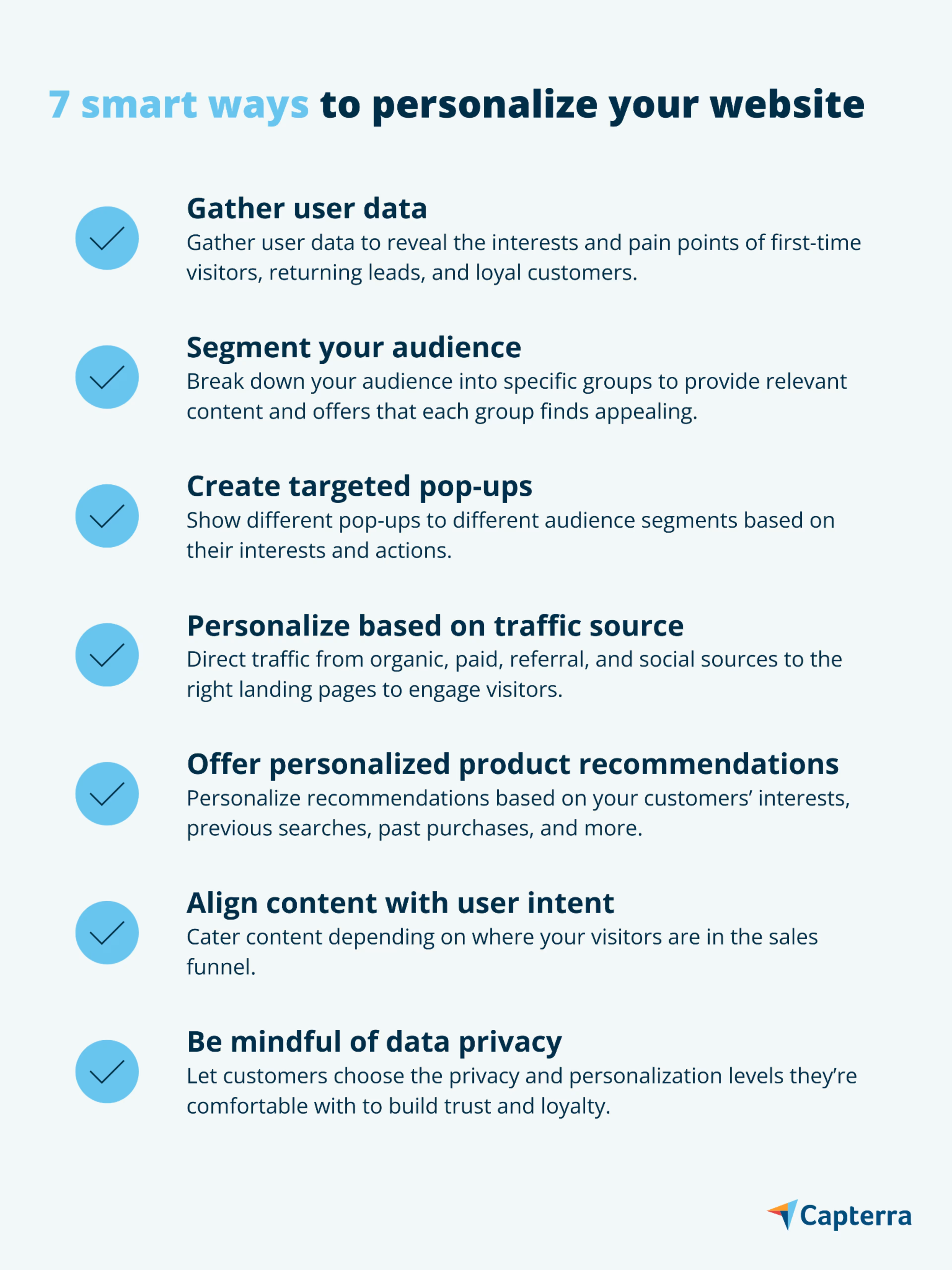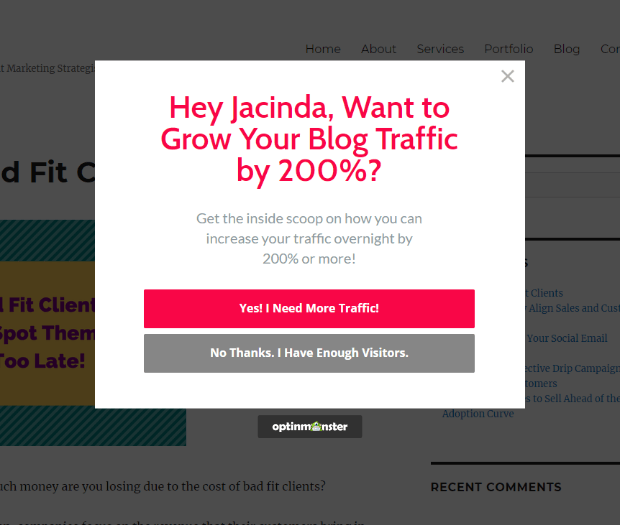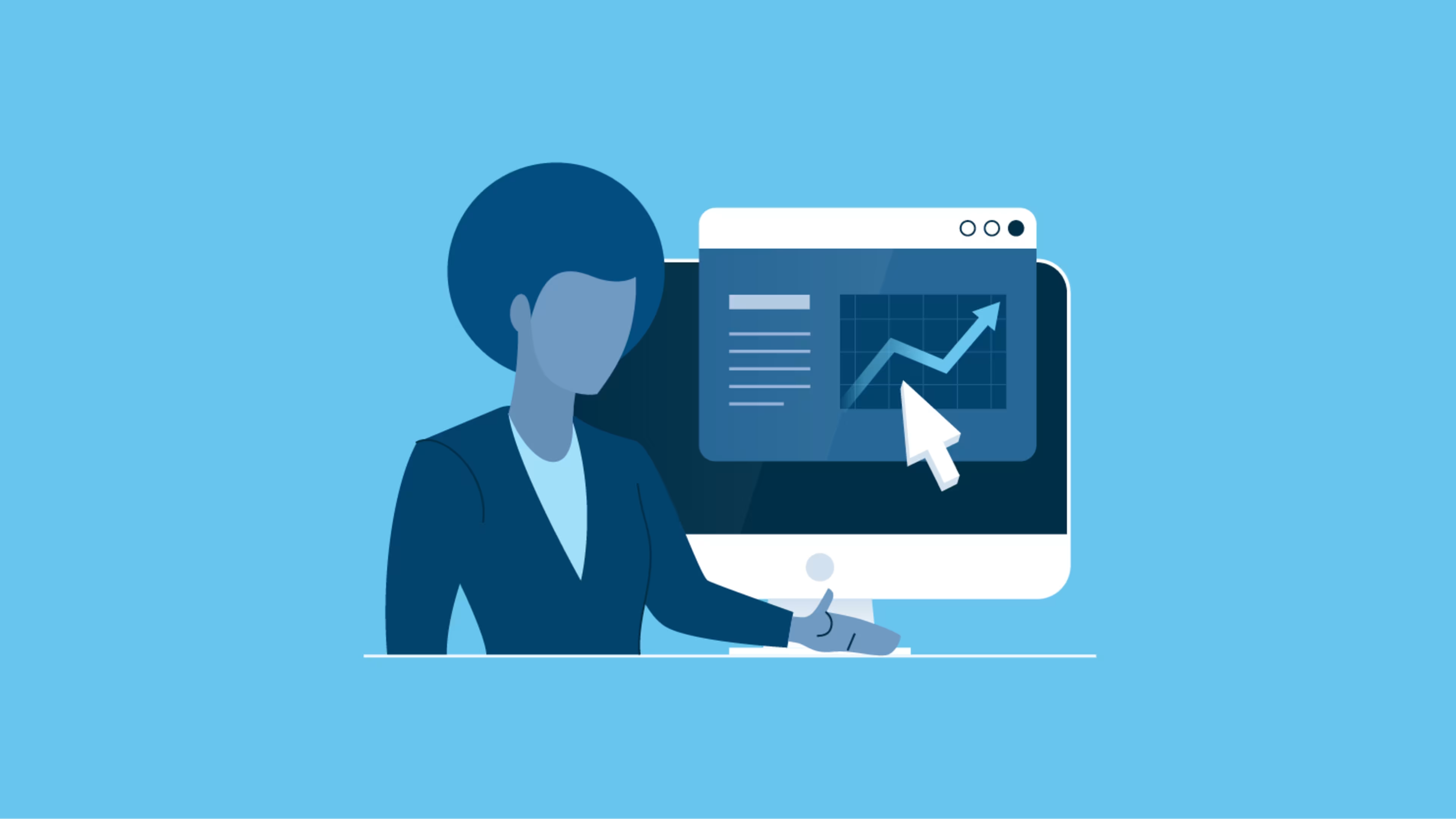Learn how to personalize your website and increase sales with these tips.
Personalizing your website to display content tailored to each visitor based on their location, demographics, behavior, and other factors helps provide a unique user experience.
Great user experiences turn visitors into customers and even help retain existing clients. Your website will witness reduced bounce rates, higher average session duration, increased conversions, and improved brand loyalty.
All those improvements could lead to more sales and return on investment (ROI).
Personalization statistics suggest that 77% of consumers are more likely to buy from a brand that offers personalized services or experiences. In fact, personalized content leads to repeat purchases in nearly 44% of consumers.
Tailoring your website content to the needs of specific individuals could lead to more business and higher profits. But to get it right, you’ll have to unite your marketing and sales teams.
Whether you run a small business or a large enterprise, get your marketers and salespeople together and use these website personalization tips to boost your bottom line.

1. Gather user data
Collecting user data is a prerequisite to quality personalization. This step is essential because making web personalization decisions based on guesswork will lead you nowhere.
Your website can reveal crucial data on first-time visitors, returning leads, and loyal customers. Use web analytics software to gain insight into visitors’ interests and pain points. With the software, you can track interactions such as:
Where your visitors are coming from
Which pages they visit
How much time they spend on your site
What they search for
What makes them bounce back
The same goes for social channels. Social media analytics can help you better understand customers’ needs and expectations, including what content they prefer and which posts drive the most engagement and clicks.
According to Salesforce, 57% of consumers would gladly share personal data with brands if that would personalize their experience (offers and discounts). And that’s where personalized email marketing comes in.
Specific questions during registration can reveal a lot about people’s interests, preferences, and pain points. Your marketing team can use that information to personalize email messages and nudge leads toward the next stage in their sales journey.
The same applies to surveys that you can share on your website, social media, and via email. And finally, let’s not forget about in-person conversations. These are perfect for getting to know customers better and gathering feedback.
2. Segment your audience
Segmenting your audience enables personalization and highly targeted marketing for increasing leads and sales.
When you break down your audience into specific groups, you can provide relevant content and offers that each group finds appealing. You can create laser-focused messages that speak directly to each consumer.
Here’s how you can segment your audience:
By demographics: Segmentation by customers’ age, gender, education, income level, marital status, and other relevant statistical data.
By location: Segmentation by geographic location to target customers in a specific state, country, city, or area (urban, suburban, rural).
By behavior: Segmentation by behavioral data such as past purchases, product/service preferences, page visits, product clicks, and cart abandonment to identify purchasing behavior and spending habits.
By psychographics: Segmentation by psychographic data such as personality traits, attitudes, opinions, aspirations, values, beliefs, interests, and lifestyles to identify what influences people’s purchasing behavior.
Segmenting customers by who they are, where they are, how they interact with your brand, and why they purchase from you will give a clear picture of their needs. Then, you can develop strategies to personalize their experience.
3. Create targeted pop-ups
Firstly, decide whether you want to use pop-ups and then ensure you do it right. This personalization strategy can provide many benefits, but you have to be careful with implementation. Irrelevant or impersonal pop-ups can hurt your sales, or too many pop-ups can annoy a website visitor.
But with the right strategy, you can show different pop-ups to different audience segments based on their interests and actions. For instance, you can offer discounts to first-time visitors, notify someone that a product they searched for is back in stock, or suggest expert advice.

Example of a personalized pop-up (Source)
Creating pop-ups with a target customer in mind is an excellent way to personalize visitors’ experiences and drive them to take action. You can encourage them to subscribe to your email newsletter to access exclusive content, get discount codes for their next order, or anything else that’s relevant to them.
You can also set various events that trigger the pop-ups. For example, when a visitor adds a product to the shopping cart, views an out-of-stock product, or makes a certain mouse movement (exit-intent pop-ups
Example of an exit-intent pop-up based on purchase history (Source)
4. Personalize website content based on traffic sources
Personalizing your website based on traffic sources can help boost conversions, sales, and ROI. That’s because different messages resonate with different audience segments.
Instead of displaying generic content for all visitors, adapt website content based on where each visitor is coming from.
Direct traffic from organic, paid, referral, and social sources to the right landing pages to engage visitors, address their pain points, and provide real value. For paid website traffic, that means delivering on your promises. For instance, if a paid ad promises a discount, all visitors clicking through must land on a page with a discounted offer.
For social media visitors, make content sharing seamless. When someone visits your website from, let’s say, Facebook, display the Facebook share button so it’s easier for them to share your content.
5. Offer personalized recommendations
Personalized product recommendations can reduce bounce rates, increase conversions, boost order values, and improve loyalty. They can even increase the customer lifetime value (CLV) and decrease the cost of acquisition (COA), leading to higher profits.
Make relevant product recommendations based on your customers’ interests, previous searches, past purchases, products currently in their shopping cart, and more.
You can offer supplementary or complementary products for upselling and cross-selling opportunities, display seasonal offers on the main product page based on geographic locations, and suggest recommendations on the cart page. All of this will encourage people to purchase from you.
You’ll need a plugin to create these recommendations. Find one that’s compatible with your website builder to set desired filters and leverage the user data you’ve compiled over time.
6. Align content with user intent
User intent is essential for creating content relevant to visitors’ search queries, no matter where they are in the customer journey.
Depending on the sales funnel stage they’re in, your website visitors will have different goals and interests. Some want to learn more about your products or services (informational intent), some are ready to purchase (transactional intent), and while others are looking for your specific website (navigational intent).
Therefore, it’s crucial to tailor your content (e.g., landing pages, banners, pop-ups) to different buyer intent.
Dig into search terms to uncover user intent, determine where people are in their buying journey, and optimize your content accordingly. That’s also vital for developing a successful content strategy for SEO since Google considers user intent when ranking websites.
7. Be mindful of data privacy
Personalization isn’t possible without customer data. The more data you collect, the better experiences and more value you’ll be able to provide.
However, as much as consumers want a personalized experience, they also want to protect their privacy. More importantly, they don’t want companies to misuse their data or sell it to third parties.
Finding a balance between the two is critical. You can do it by increasing transparency and giving users more control over their data. To build trust and loyalty, let visitors choose the privacy and personalization level they’re comfortable with.
Also, ensure compliance with the privacy laws of your area—or international laws if you’re targeting global customers—that may restrict data collection and analysis.
For instance, the General Data Protection Regulation (GDPR) isn’t applicable in the U.S. but it is in Europe, so be mindful of the regulation if you’re looking to target EU-based consumers. You wouldn’t want to get into an EU-U.S. data transfer conundrum like Austria’s medical news company that breached the GDPR.
Website personalization examples to take note of
The following website personalization examples can nudge you in the right direction:
Stitch Fix: Offers an add-on service where an expert stylist tailors customers’ shopping experiences based on their lifestyle, needs, and tastes.
Airbnb: Recommends travel experiences based on geolocation and saved searches.
Future Kind: Personalizes product recommendations through a nutritionist-designed quiz.
Bay Alarm Medical: Personalizes blog content for seniors, families, and caregivers.
We recommend checking out how these companies do site personalization to get a clear picture of the possibilities and draw inspiration for your website.
Use personalization software to enhance visitor experience
Personalizing your website for a seamless customer experience is essential for meeting customer needs and driving more sales. The key to achieving that lies in data, but you have to be mindful of data privacy.
Also, you should choose the right technology tools because the wrong software is worse than no software. Whether you use personalization in B2B or B2C marketing, personalization software tools can make all the difference in helping you gather and leverage invaluable customer data.
To improve sales with personalization, use the right technology and start applying these tips today to supercharge your business for tomorrow!
Depending on your needs, you can hire an agency for help personalizing your website. Check out our hiring guides for branding agencies and marketing analytics companies to determine which one would be a better fit for you.
Are you interested in becoming a guest writer for Capterra? Reach out to guestcontributors@gartner.com for details.
